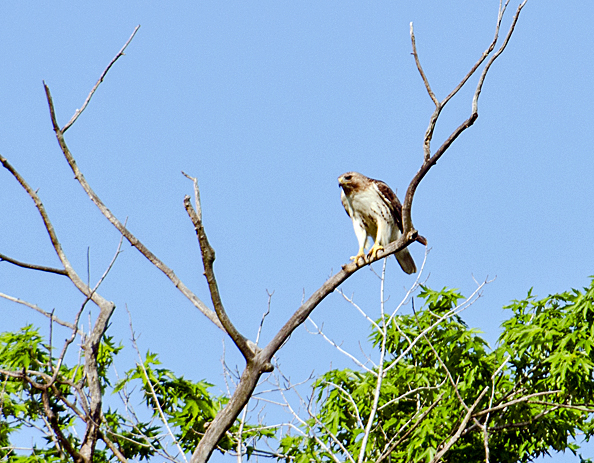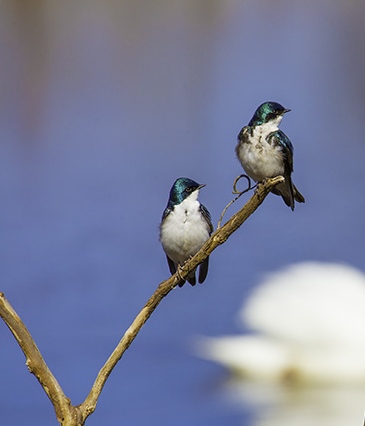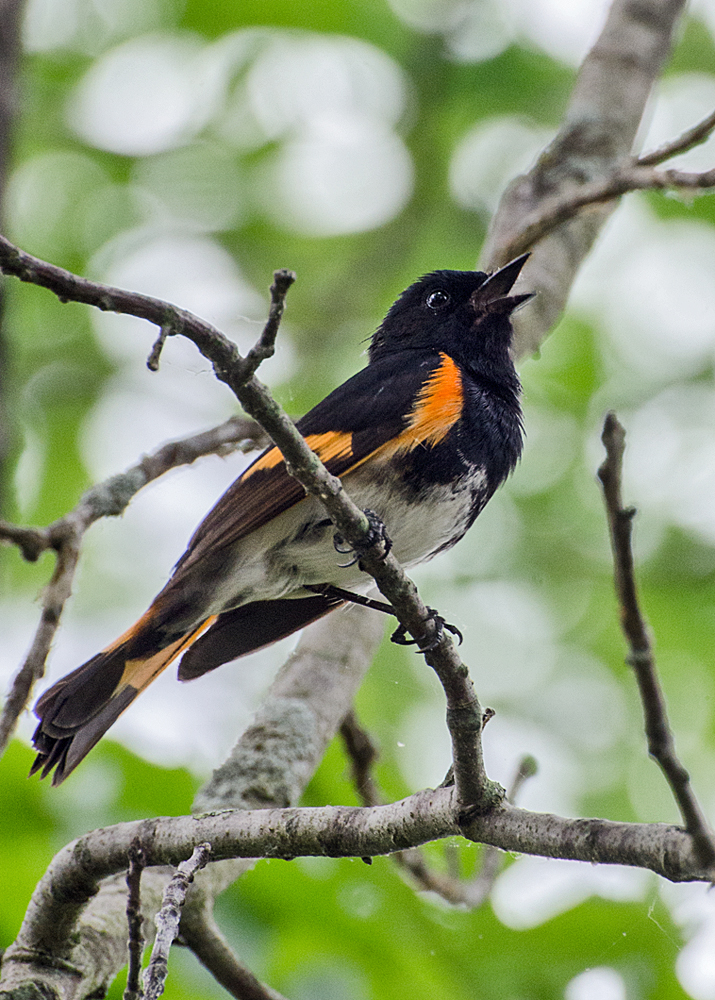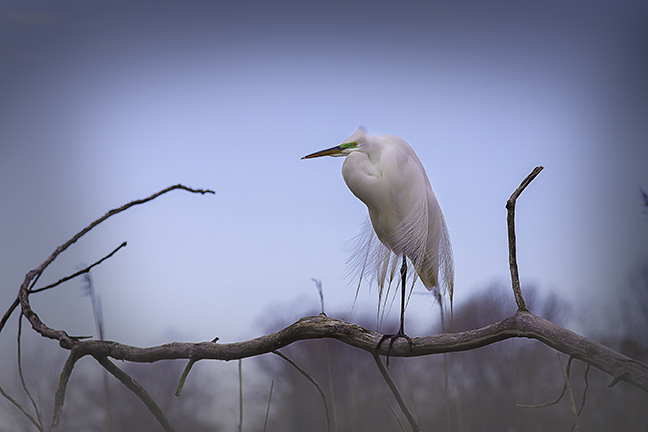A snag, in the language of forest ecology, refers to a standing dead or dying tree.
Preserving or creating snags on our property provides habitats for birds, and can be interesting and rewarding.
Important wildlife habitat is provided when dead wood is available. Birds evolved in forests where dead wood was never removed as part of woodland management. Dead trees are virtually absent in many urban neighborhoods as we have a tendency to view dead wood as without value. On the contrary, dead and dying trees are used for shelter, foraging, nesting and other uses for many species of birds.
Think of a snag as an airport for birds. Flycatchers, Cedar Waxwings and numerous other birds use snags as launch sites as they sally out again and again after flying insects. If the snag is close to a field, it may be used by Hawks and Owls that sit and wait patiently for mice and voles. Near water, snags are used by Kingfishers, Eagles, Herons, and Osprey. At least 30 species of birds commonly use snags as foraging perches.
Snags are also used as singing perches. Perhaps the acoustics are better from a snag? Certainly acoustics are great from a tall dead branch that does not have foliage to absorb the sound. Think about when you see a crow sending out an alarm to his family members, head stretched forward and beak open wide, – that’s always from a prominent perch, isn’t it?
Nothing could be better than a snag for purposes of acoustics in the mind of a woodpecker. Think of a hollowed out drum, just right for hammering. That’s what woodpeckers are doing on those dead branches that resonate so well – letting the female know he has a great territory and is ready to help her out with breeding season.
Snags allow smaller birds to use them as a lookout post. It pays to peek out from a perch to get a complete view in either direction, making sure the coast is clear.
Small snags are invaluable to birds that have bathed in your bird bath and need a place to shake dry and preen. This became a real lesson to me when I placed a bird bath near cedar trees that had dying branches at their lower edge. Each time that a migrant warbler approached the bath, it approached from those branches. Needless to say, I began to look at those branches in a different way.
Creating a snag can be as simple as leaving a tree that has started to die. If you have concerns about the location of the tree in relation to your house, have a landscaper trim the height for safety. Girdling a tree involves removing a ring of bark around the circumference of the tree, which will eventually kill it. Choose an invasive tree or one that is crowded by fellow trees.
The snag in my yard was acquired when the neighbor was taking down a black walnut tree. The tree crew was very helpful in getting one of the large trunks of the tree over the back fence. A deep hole (1/3 of the height of the snag) was dug and the snag was “planted”.
If you have concerns about the appearance of your dead tree in the neighborhood, plant Virginia Creeper at the base. It is a beautiful showy green vine all summer and turns to crimson in fall, with berries the birds love to eat.
Remember- even dead branches within your larger shrubs will serve the purpose of a snag for many of our songbirds.
Have fun with this new aspect of Birdscaping in your yard.
Enjoy your birds!
Have you joined our email list? Click here to sign up, it’s free and gives you access to sales, coupons, nature news, events, and more!




